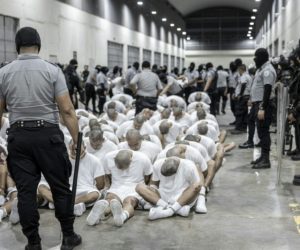
by Matthew B. Flynn, Professor of International Studies and Sociology, Georgia Southern University
Jacek Lubecki, Professor of International Studies, Georgia Southern University
Since the Hamas brutal attack on Israel on 7 October 2023, killing about 1,200 people and taking more than 250 hostages, including civilians and members of the Israeli Defense Forces (IDF), there has been a lot of biased commentary that selectively chooses facts to defend a one-sided narrative. There has been less objective analysis to address wholesale distortions and uphold fundamental rights that point towards the shared humanity of both Palestinians and Israelis.
One of the startling voices comes from avowed atheist Zionists. For example, David Anderson, lawyer and self-proclaimed Middle East expert, dismisses Palestinian nationalism by arguing that the concept of an Arab “Palestine” is relatively recent, emerging in the 1960s, and that their identity has been devoted to replacing the Jews and Israel. No other country is based on this type of exterminative ideology.”
Sam Harriss, philosopher and neuroscientist, claims that there is a “moral disparity between Israel and her enemies” and that one must “side with Israel here”. Harris portrays Israel as a nation that “would simply live peacefully with its neighbors” if it could achieve its aims, while describing Hamas as seeking to “implement a seventh century theocracy in the Holy Land”.
We evaluate claims related to national identity and political ideologies in light of the historical record as well as the internal contradictions and biases offered by these accounts.
Nationalism as Modern-Created “Imagined Communities”
First is the notion that there is no true Palestinian identity. One version of this claim is that the land of modern-day Israel was barely populated and/or that Palestinians are “really Arabs from other countries who arrived from surrounding states to work on British and Zionist infrastructure projects in the 1930s and 1940s. Many after Jewish arrivals.”
Such claims of “a land without a people” in the 19th century are not supported by historical evidence and are considered inaccurate by modern historians. According to Ottoman records and other historical sources, Palestine was indeed inhabited during the 19th century. Alexander Scholch’s research indicates that by 1850, Palestine had approximately 350,000 inhabitants, with about 85% Muslims, 11% Christians, and 4% Jews.
It is true that Palestinian identity is a recent creation, but all modern nationalisms are “imagined communities,” according to Benedict Anderson (no known relation to David). However, that such an identity did not exist before the 1960s, as Anderson claims, is not born out of the historical record.
According to Rashid Khalidi’s book Palestinian Identity: The Construction of Modern National Consciousness, modern Palestinian national identity did not emerge at a single specific date or time. Instead, Khalidi argues that it developed gradually, with roots in nationalist discourses that emerged among the peoples of the Ottoman empire in the late 19th century.
This process of identity formation sharpened following World War I, particularly after the demarcation of modern nation-state boundaries in the Middle East. Khalidi emphasizes that while the challenge posed by Zionism played a role in shaping this identity, it is a “serious mistake to suggest that Palestinian identity emerged mainly as a response to Zionism.”
It is important to note that Zionism is also a modern creation. Before the late 1800s, there was no “Israeli” or Jewish “nation”. Jewishness was an ethnic and religious identity. While the target of pogroms, in part, derived from the growth of other nationalisms developing at the time, the evolution of modern Jewish nationalism is similar in its novel quality and complexity to the evolution of Palestinian nationalism.
The Myth of the Voluntary Arab Exit
A similar historical blindness occurs with the stories of what Palestinians call the “Nakba,” and Israeli Jews refer to as the founding of the state of Isreal. According to Anderson:
The “Nakba” catastrophe myth describes Palestinians “kicked off their lands” when thousands left voluntarily “temporarily”, believing Arab governments’ propaganda that once the Jews were “thrown into the sea” (their words) the entirety of the area would be theirs.
.
That “No Arabs were expelled ever” is an outright lie. Benny Morris, challenging both Zionist and Arab narratives, describes the expulsion in detail in his books but sees it as contingent. He does not explicitly describe Israeli actions as “ethnic cleansing,” but he acknowledges that expulsions, atrocities, and fear played significant roles in the displacement of approximately 700,000 Palestinians.
Others sources have recounted first-hand testimonies of Jewish militias and stories of massacres carried out by Jewish forces, such as Deir-Yassin, confirmed by several sources and are beyond any doubt. The Jewish military commander Moshe Dayan’s admitted that Jewish villages were built on the sites of destroyed Arab villages, and the erasure of those villages from memory. His justification of shooting at hungry Arabs crossing the border to collect grain and setting mines for them is a direct admission of violent acts against civilians.
Similarly, there were numerous atrocities committed against Jews. During the Kfar Etzion Massacre (May 13, 1948), around 120–150 Jewish residents and defenders of Kfar Etzion were killed by Arab irregulars, reportedly with the participation of soldiers from the Arab Legion.
During such existential wars, there is plenty of blame to go around. But there are also stories of hope. Occasionally, Jewish community leaders defended their Palestinian neighbors against IDF militias. On occasions, Jewish militias committed no atrocities against Palestinian Arabs or even protected them – subject to the discretion of local commanders and particular local circumstances. That was especially the case in Western and Lower Galilee, where most Arab communities survived the war..
Part of the elimination of Palestinian identity includes roughly 20% who are current citizens of Israel. Instead of classifying them as “Palestinian Israelis,” they are denominated as “Arab Israelis.” Anderson is correct that they enjoy more rights and opportunities relative to Arabs living in neighboring countries. However, in Israel, they are treated as second-class citizens, facing housing discrimination, voter suppression, restriction, and communal violence.
Eliminationist Ideology as a Shared Trait
Anderson and Harris are correct in their characterization of Hamas as an Islamofascist organization focused on the elimination of Israel. Its 1988 Charter calls for the destruction of Israel and the killing of Jews. Despite revising its charter in 2017 to state that its fight was not with Jews based on their religious identity or beliefs but with the Zionist project, continued antisemitic language and the October 7 attack that included the death of hundreds of civilians belies the new professed position.
What Anderson and others fail to acknowledge is that the same eliminationist ideology is articulated by the Israeli far right. After detailing Hamas as a “fundamentalist Islamic movement” and not merely fighting for Palestinian self-determination, Hillel Schenker writes:
There is no doubt that the messianic religious fundamentalists represented by Finance Minister Betzalel Smotrich and his National Religious Party, and the racist followers of Rabbi Meir Kahane—National Security Minister Itamar Ben-Gvir and his Jewish Power Party—are Jewish fundamentalist mirror images of the Palestinian religious fundamentalist Hamas in Israel. Smotrich’s 2017 “Decisive Plan” is the Israeli version of the exclusivist Hamas approach to the future of Israel/Palestine. Many Knesset members of Netanyahu’s Likud party also have the same approach.
Where we disagree with Anderson and others is their conflation of Palestinians with Hamas. Anderson argues that Gaza became “a terrorist state” run by Hamas, where the population largely supports “the Zionist elimination project” and that “every ounce of effort, work, and Palestinian culture has been devoted to replacing the Jews and Israel. No other country is based on this type of exterminative ideology.”
Accordingly, the logic is that Hamas is a terrorist organization that needs to be destroyed; Palestinians support Hamas; so Palestinians also need to be eliminated. Part of the evidence to support this line of thinking is that Palestinians voted 44.5% and the ruling Fatah received 41.5% of the vote during the 2006 Palestinian legislative election against the more secular Fatah movement. Part of the reason for its electoral victory stems from Hamas’ perceived incorruptibility and social assistance programs. After an intense civil war with its rival, Hamas has ruled Gaza with an intense iron fist, without political freedoms or democratic elections. Still, it should be seen as a complex political actor seen also as an armed resistance group and provider of social welfare.
Additional evidence cited to conflate Palestinians with Hamas is the survey data showing that 68% of the population supported suicide bombings in a 2011 poll. Different surveys reveal that support varies across time from a high of 77% during the Intifada to a low of 29% soon after. Comparable levels of support for violence can be found amongst Jewish Israelis, with polls showing 81% responding that the suffering of the Palestinian civilian population should not be taken into account during the current military action in Gaza.
The use of survey data, already riddled with significant methodological limitations, without other data collection techniques, fails to capture the nuance, complexity, and context of the current circumstances, much less the variegated aspirations a people project onto their leaders — whether national liberation, dystopic security, or merely the cost of eggs. Needless to say, public opinion on both sides discounts the violence against civilians, children, and other “innocents” perpetrated either by Hamas or the IDF, suggesting that each side tends to live in their respective information silos.
The Misplaced Clash of Civilizations
Conflating all Palestinians with Hamas’ Islamofascism against the liberal modernity embodied by Israel allows for facile depictions of a clash of civilizations. Harris characterizes the conflict as a battle between “savagery and civilization”. As Edward Said in “The Clash of Ignorance” reminds us in his critique of Samuel Huntington’s thesis, simplistic dichotomies such as between “the West” and “Islam” seek to “make bellicose statements to mobilize collective passions” for political purposes—often towards violent ends—and merely result in a “great deal of demagogy and downright ignorance.” Instead of demonizing outgroups, serious commentary should seek to unveil the interconnections and common humanity between cultures as well as unravel the discussions and contests internal to civilizations.
Anderson emphasizes, “Historically if you start a war and you lose that war, you lose your land… human history is one long example of it.” Fortunately, after descending into the ignominy of two World Wars, Western Civilization created new standards, ideals, and norms. The liberal international order is premised on self-determination, universal human rights, prohibitions against genocidal violence, and the illegality of acquiring territory using force.
Herein lies the crux of the cultural clash within, as opposed to between, Hamas and Israel. The former employs savagery to achieve the goal of a sovereign state and be a part of the interstate system—a creation of Western civilization. The latter uses the power of its state, which is itself a United Nations creation, with savage consequences.
Not surprisingly, the International Criminal Court—perhaps the best representation of Western values—has issued arrest warrants for both the leaders of Hamas (now assassinated) as well as Israel’s leaders. The October 7th attack resulted in war crimes for the mass killing of 815 civilians, kidnapping hundreds, and rape; includes indictments against Israel’s Prime Minister Netanyahu and leader of the IDF Gallant’s include “the war crime of starvation as a method of warfare; and the crimes against humanity of murder, persecution, and other inhumane acts.”
Gaza’s current death toll surpasses 50,000, of which about 80% are civilians. To account for indirect deaths due to infectious diseases, exposure, and lack of water and food, the official body count should be multiplied, conservatively, by a factor of four—or 200,000 people. Moreover, life expectancy in the Strip has fallen from 75.5 years in 2023 to 40.6 years. The International Court of Justice ruled yhat Israel has committed “plausible” genocide. The violence is not just in Gaza: some 40,000 Palestinians have fled their homes due to settler violence and IDF military operations in the West Bank.
Out-of-the-Box Thinking for a Lasting Peace?
There is plenty of blame on both sides for failing to achieve a peace agreement. We agree with Anderson that Palestinians could have accepted the 1998-2000 settlement. The basis for such peace would be following international law, including UN Security Council Resolution 242 and General Assembly Resolution 194. They call for a withdrawal of Israeli forces from occupied territories, the end of hostilities by all parties, and mutual recognition of state sovereignty.
One of the most difficult issues to resolve concerns the right of Palestinian refugees to return to their homes or receive compensation. Here, Trump’s Plan to build luxury resorts along the Gaza Strip may point in the right direction—but not as a form of ethnic cleansing as he and Anderson suggest. Had the billions the United States provided Israel to bomb its enemies and the resources used by Hamas to build tunnels under the rubble been used to make Gaza into a country club for Palestinians, the current conflict (and perhaps even the creation of Hamas) would likely have been averted.
In the meantime, the voices and efforts of peace movements on both sides should be emphasized. These include the Great March of Return—an initially peaceful demonstration in Gaza led by independent activists until usurped by Hamas and violently repressed by the IDF. There are also binational peace movements advocating non-violence and rights of both Palestinians and Israelis, including the Combatants for Peace, Alliance for Middle East Peace, and Standing Together to name a few.
The Israeli-Palestinian conflict also represents a case where Diversity, Equity and Inclusion efforts—loathed by both Anderson and Harriss—should be pursued. Such efforts would include learning the complexities and commonalities of Islam and Judaism by reading the Sons of Abraham rather than drawing from the biased accounts by the Middle_East_Media_Research_Institute that would not pass the CRAAP test.
*The views expressed in this article belong to the authors and do not reflect those of Georgia Southern University.
ID 82630417 ©
Bennymarty | Dreamstime.com
















